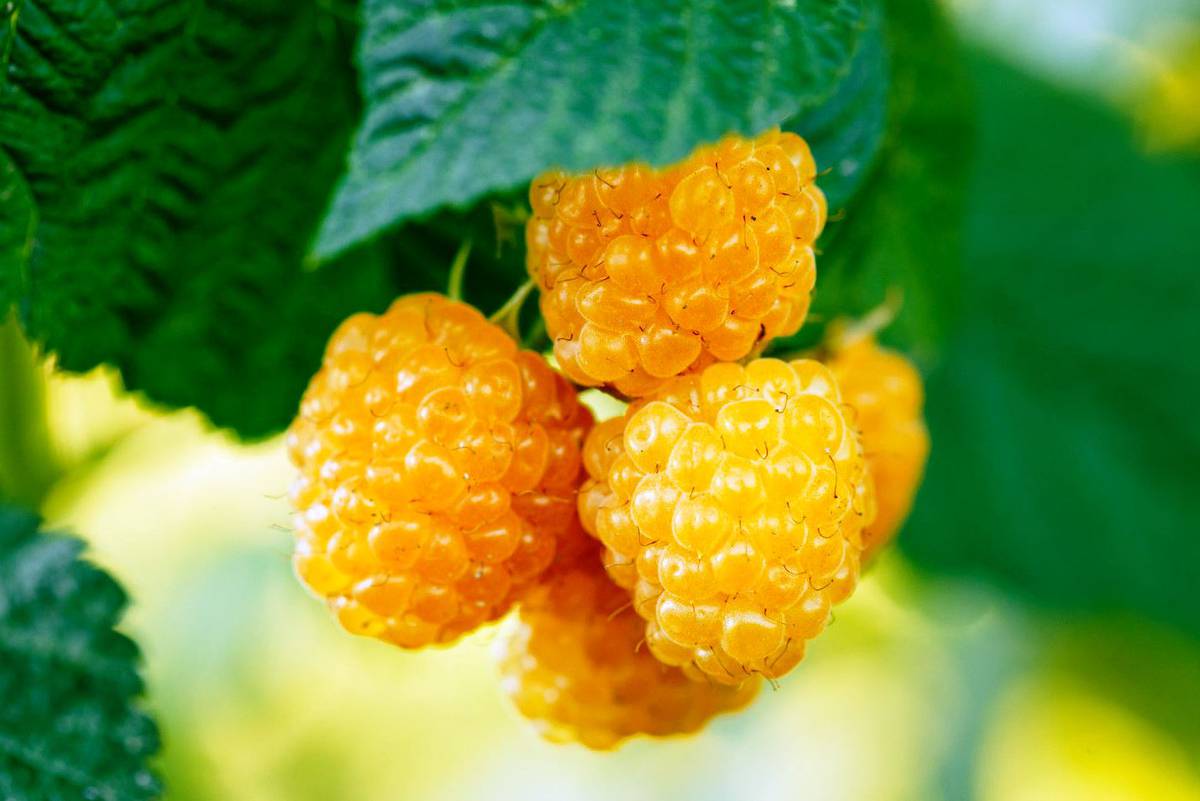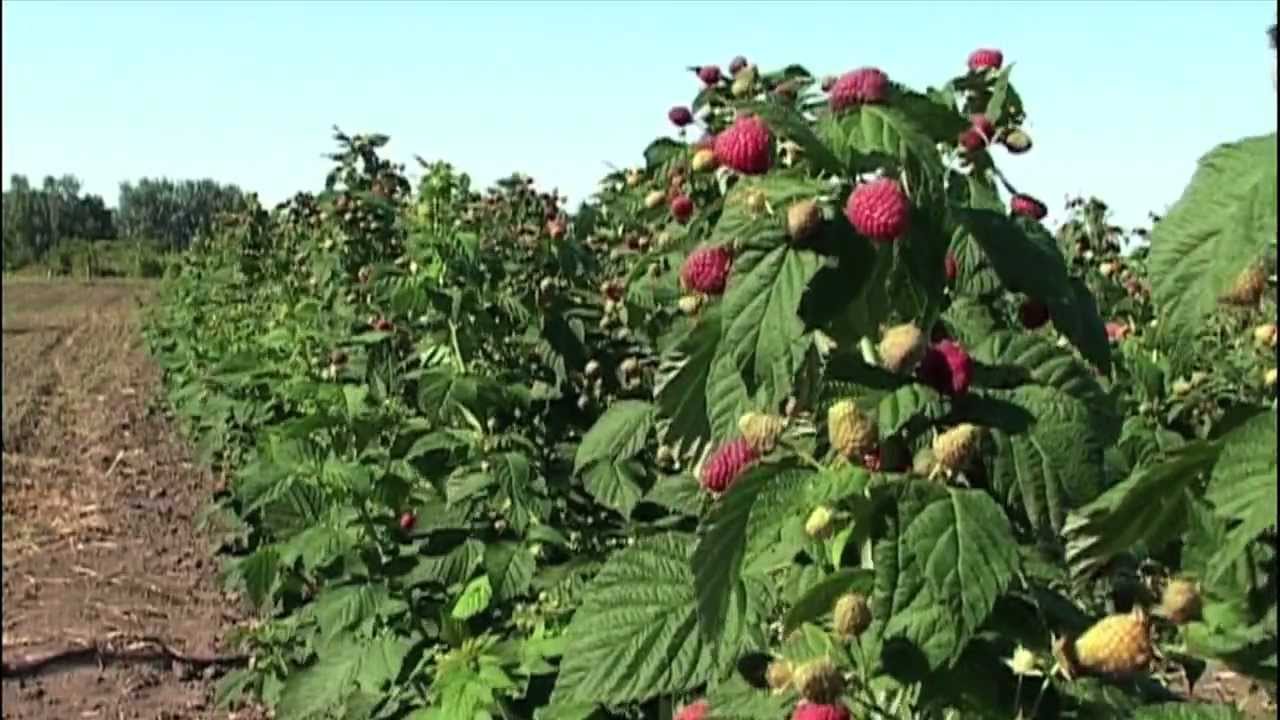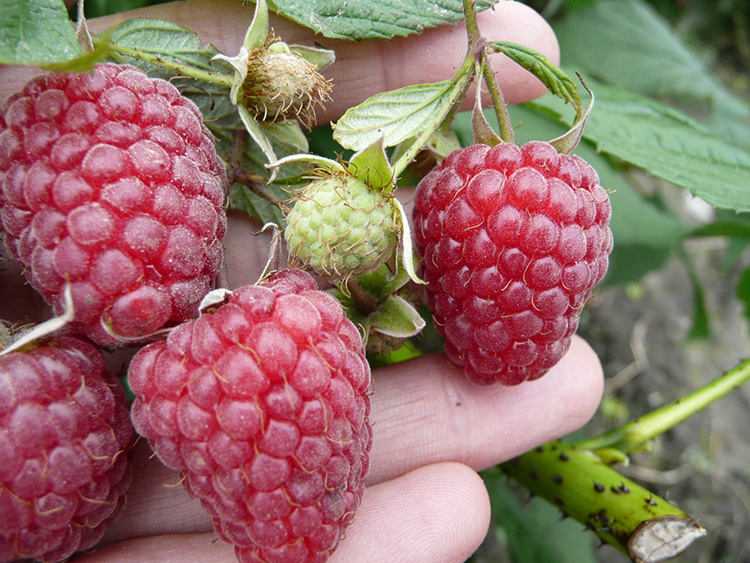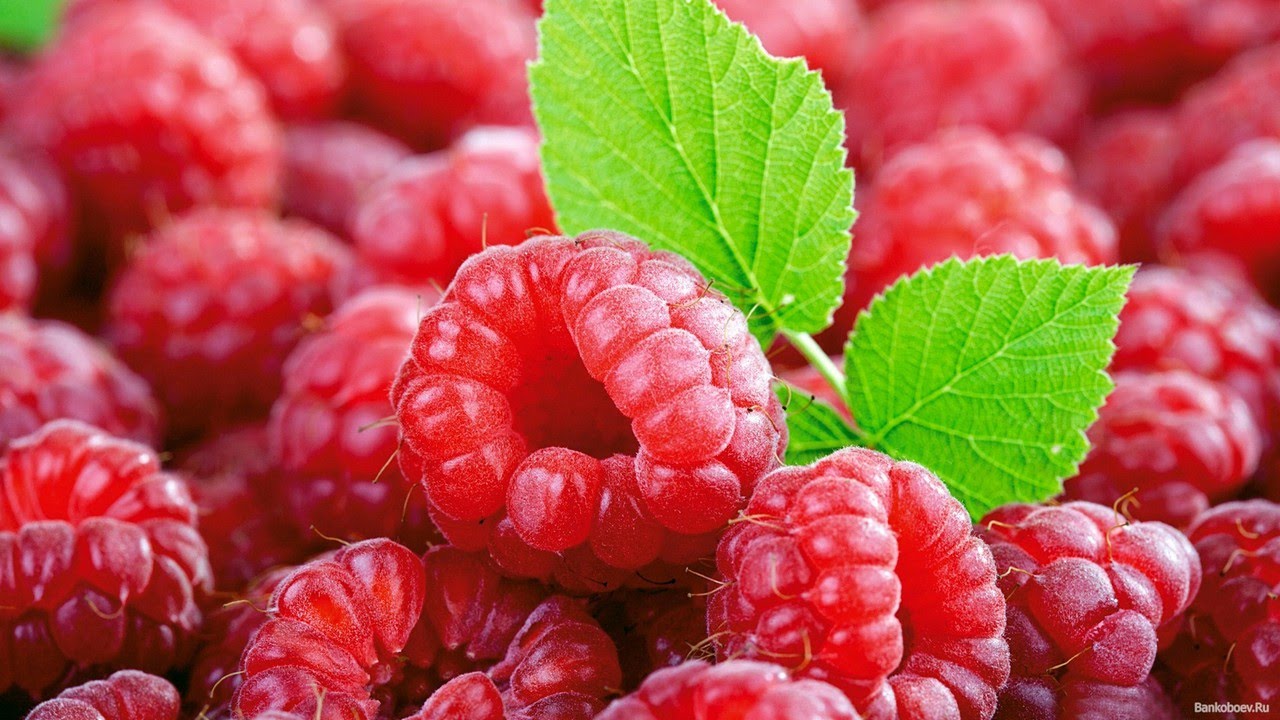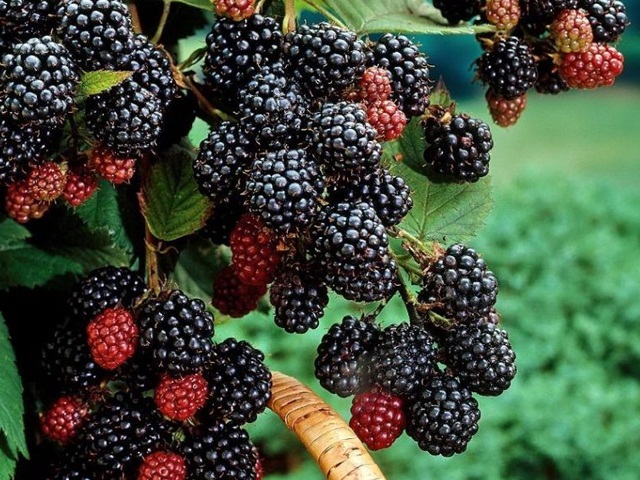There are a lot of varieties of raspberry varieties today. Breeders are not satisfied with what has already been achieved, breeding more and more fruiting and resistant to various weather conditions. Today, there are more than a hundred species of raspberries that have proven themselves both for personal use and for commercial purposes. The Polka variety has won great love and universal respect. Descriptions of the Polka raspberry variety are very favorable, first of all, the ripening of berries at temperatures equal to zero. It was bred in the 90s of the 20th century by the breeder J. Danek in the Polish city of Brzezn, and received the corresponding name Polka. Due to its high yield, it quickly spread to different regions and countries of the world.
Characteristics of the variety
The description of the raspberry variety Polka classifies it as a remontant crops, respectively, it bears fruit until the very frost, starting in July, which pleases the farmers very much. The yield reaches about 4 kg per bush. In the autumn, if you exclude pruning of shoots, the first harvest will ripen with the first days of summer. But experienced breeders recommend abandoning a double harvest without additional care, since this is a significant burden for the plant, and the berries of the repeated harvest will be smaller and less juicy.
Since the raspberry Polka belongs to the remontant culture, it is a medium-sized bush, reaching a height of 150-180 cm, with rigid branches stretching upwards. Due to this, there is no need for additional supports and trellises. The number of thorns on the bush is small, so there is no difficulty in harvesting. The leaves are bright green.
On a note. Unripe berries do not die with the arrival of the first frosts, but ripen when the frosts pass. Withstand negative temperatures up to minus 2.
Raspberry remontant Polka is characterized by berries of a rich raspberry hue. Its fruits serve as a kind of standard for raspberries, while having a regular conical shape of a rather large size, about 3 cm in length. Weight can vary between 5-8 grams.
A distinctive feature is a bright and rich sweetish aftertaste, which received the maximum assessment from breeders. The consistency of the fruit is fleshy, but at the same time dense, which ensures long-term storage and transportation. The aroma is unforgettable, intense and very appetizing. When ripe, it does not fall from the branches, which makes harvesting easier. Up to 10 berries can ripen on one brush.
The variety has good resistance to winter frosts, taking into account proper preparation, to pests and diseases. But under prolonged exposure to the burning sunlight (at temperatures above +35), individual leaves may dry out, and the berries lose their juiciness and are slightly deformed. Timely feeding of the plant, moderate watering is recommended.
The root system is quite powerful and well-developed, one root can form about 10 new shoots per season. But the roots are prone to various diseases and rotting with improper care and excessive watering.
Due to their dense consistency, the berries are subject to freezing, cooking compotes from them, preserves, marmalades, jam. This variety is rightfully attributed to the dessert type, therefore winemakers often use it in the production of wine.
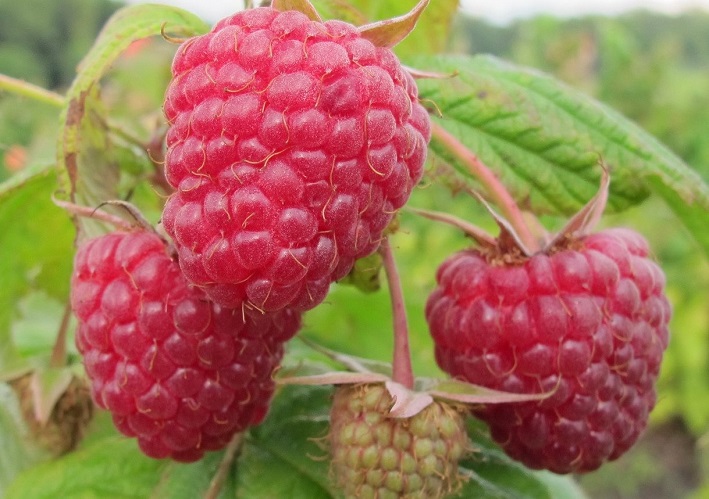
Raspberry Polka berries reach 10 gr.
Landing features
Traditionally, the most favorable time for planting Polka is late autumn - early spring.But an experienced gardener will say that it is better to plant in late September - early October, since the bushes will have time to take root before the winter cold, and with the first warm spring rays they will grow and give the first shoots.
Landing takes place in a well-lit area. Preparation includes standard actions: cleaning weeds, digging, marking holes. The Pole is not whimsical to the soil, therefore soil fertilization is not an important factor, more important is the periodic feeding of the plant. Therefore, it will be enough to put a small amount of humus or specialized fertilizer in the pit, for example, Agrecol, which is enough to mix it with the soil before planting at the rate of 50 grams. for 1 pit. Subsequently, they can feed the culture. The price is within 300 rubles. RF for 1 kg.
Raspberry Shelf is planted at a distance of at least half a meter from each other. Up to 2 meters are left between the rows. Planting is possible in separate holes, as well as in trenches. The size of the pit and holes is standard (50 cm by 50 cm).
It is better to use a seedling at the same time of medium size, with good "live" roots (length - not less than 15-20 cm), without visible diseases, dry shoots. The presence of 3 or more shoots is encouraged. If the root is open ("bare", there is no earth), it is placed in a solution based on clay and water (clay is mixed with water to the consistency of thick sour cream) for a couple of hours before planting.
The planting process is standard, it involves spreading the roots along the bottom of the pit, cover the root collar with an earthen layer no more than 2-3 cm, the soil should be slightly compacted after planting, pour a bucket of water. When the moisture is well absorbed, loosen the soil.
Important! When the first buds appear, you need to cut the stem just above the first shoots. The remaining plant cut will grow even better.
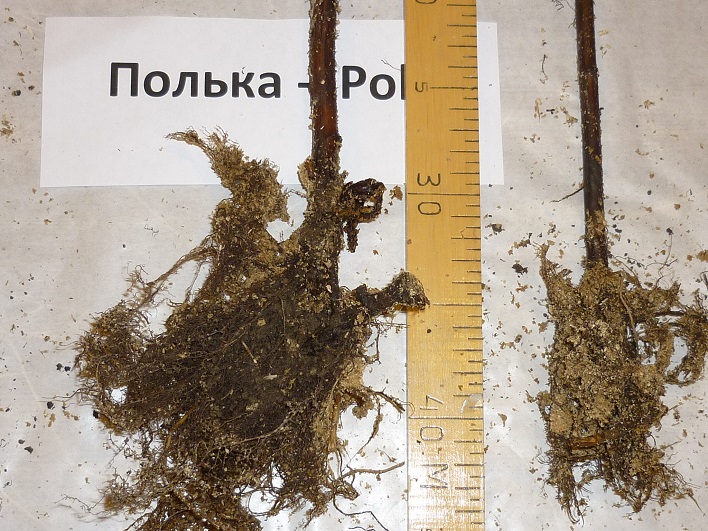
"Correct" seedling of raspberry Polka
Polka care
Raspberry Polka requires traditional care, which includes:
- Annual plant fertilization. In spring, raspberries grow very quickly, so the first fertilizers can be applied already in early April. For this, traditional feeding methods based on nitrogen, phosphorus or potassium are used. You can use humus at the rate of 1.5 kg per bush, or mix wood ash with 5-10 grams. nitrogen or phosphorus fertilizer. Spread evenly over the surface of the soil within a radius of a meter around the bush, and then carefully loosen the soil. In late autumn, after pruning, the soil is also "fed" with humus. Or you can apply a ready-made fertilizer - Agrecol, left after planting, but in this case, the soil is fertilized already at the end of June - beginning of July. Once a year is enough. It will take about 10-15 grams. on a bush, while scattering fertilizer around the trunk of a bush on dry (important!) soil, then everything is plentifully watered with a bucket of water. It has been proven that the annual fertilization of raspberries directly affects the yield;
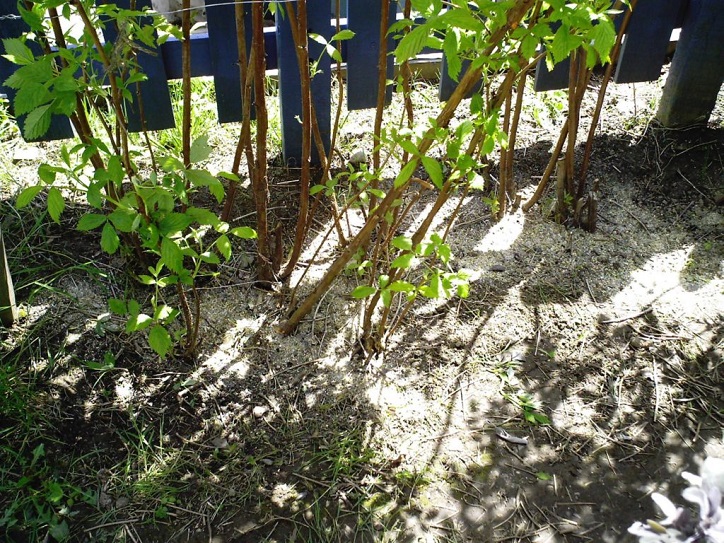
Spring fertilization of raspberries Polka
- The Polka variety rarely needs a garter, but if it grows in shady areas, the branches grow strongly, in which case they can bend under the weight of berries and require support on trellises. Or, by pulling a thick nylon thread in several rows, you can use the so-called "fan" garter, when each branch is tied separately, thereby forming an open fan, which greatly facilitates picking berries;
- Watering is required weekly, up to 2-3 times. If the temperature exceeds 30 degrees, water the raspberries every other day with a bucket of water. On spring days, when the sun is not very hot, a bucket of water for a week is enough. At the end of autumn, before the first frosts, intensive watering is required; a couple of buckets of water are used at a time. The ground must be sufficiently moist to a depth of 30 cm;
- After watering, when the soil dries out a little, loosening is required to a depth of 5-7 cm, all weeds are weeded;
- This crimson species is afraid of hot sun rays. It is recommended to protect leaves and fruits with a thin white covering material. Density 17 or 30 gr. per sq.m. will be sufficient.Agrofibre (spunbond) is capable of transmitting light, rain, but at the same time retaining harmful ultraviolet rays;
- Pruning is done after the last harvest. The entire trunk is cut off with a sharp pruner. The guarantee will be good fertility for the next year. If the stem is not cut, you can harvest 2 crops per year. In this case, all uncut branches are bent to the ground in a standard way and covered with covering material or improvised means (fallen leaves, sawdust, etc.);
- Polka rarely gets sick, but before bud break, you can spray it with a 3% solution of beard's liquid at the rate of 10 ml. for 5 liters of water. For preventive purposes, this is to prevent the appearance of such a fungal disease as anthracnose (the leaves change color, turn purple, then curl and shrink). If a plant is found to have root cancer or verticillary wilting, the culture begins to dry out. There is nothing left but to dig up the entire bush, carefully remove the roots and burn everything. The place where the diseased plant grew is carefully "fed" with manure and mineral fertilizers before planting a new one.
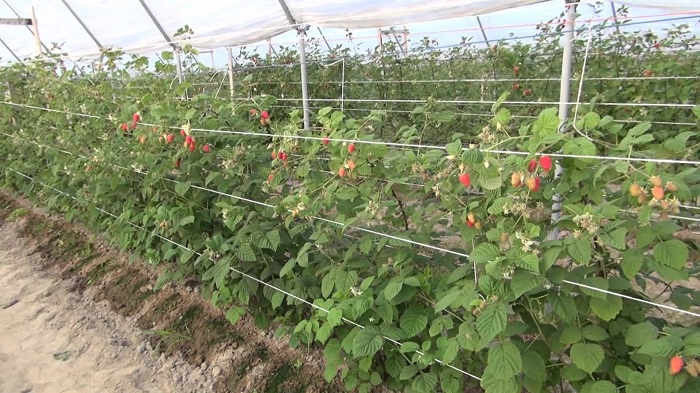
Raspberry Polka is grown commercially
Reproduction
Reproduction of Polka raspberries is possible with the help of root shoots, which the mother bush starts up. In the middle of summer, the most "healthy" annual offspring are selected, which are dug up and immediately planted in the traditional way. It is not necessary to shake the earth from the offspring so as not to damage their rhizomes. The best time to transplant is early in the morning or late in the evening when the heat subsides. Planting is carried out in the standard way, having previously shortened the stem so that several buds remain above the root collar. After planting, each offspring is watered with a liter of water. The offspring planted in this way are accepted quite quickly, and by winter they grow so much that they can “overwinter” without any problems.
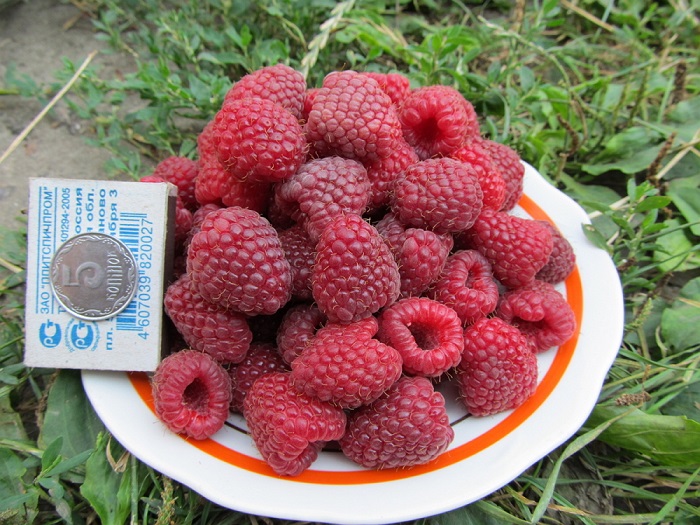
Raspberry Polka berries have a special unforgettable taste
Malina Polka has rightfully earned the respect and love of farmers from different countries. Its uneven ripening allows you to feast on the fruits until late autumn, and the long shelf life makes it possible to massively grow them for sale in stores. In addition, the berries have an amazing taste and rich aroma; care for the variety requires standard care, which attracts amateur gardeners.
